If you’ve been outside recently, you might have noticed some cute little goslings following their mother around. Goslings are among the cutest creatures in the poultry world.
In this post, we’ll tell you everything you need to know about goslings and advise you on what to do if you come across one. Continue reading to find out more!
Are baby geese called goslings?
Yes! Goslings are baby geese.
Goslings are born with their eyes open and covered in soft down feathers. Within 24 hours, they leave the nest, following their parents. A baby goose develops rapidly and can fly in two to three months.
Adult geese typically mate for life and return to the same nesting location year after year. Suppose you happen to come across a family of geese. You may notice that the young geese stick close to their parents and mimic their behavior. This teaches them important survival skills, such as finding food and avoiding predators.
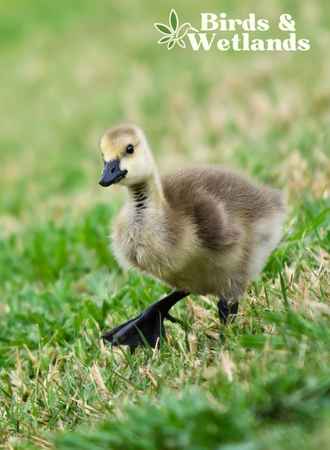
Do geese leave their goslings unattended?
Though it may appear that parent geese occasionally leave their goslings alone, this is never the case. Parent geese are fiercely protective of their young and will go to any length to protect them. This includes always being close by and using their bodies to protect their goslings from harm.
If a parent goose is forced to leave its gosling for any reason, it will only be for a short time and will return as soon as possible. Parents have been known to die rather than abandon their goslings. This shows the bond between parent and child in the animal kingdom.
How long do goslings stay with their parents?
Young goslings remain with their mothers until they are ten weeks old and can fly. This is because both parents contribute to the defense of the nest and the safety of their children. The parents will also continue to teach their goslings how to forage for food and avoid predators.
After ten weeks, the goslings can fly and no longer depend on their parents for protection. On the other hand, the bond between parent and child usually remains strong, and goslings frequently return to visit their parents even after adulthood.
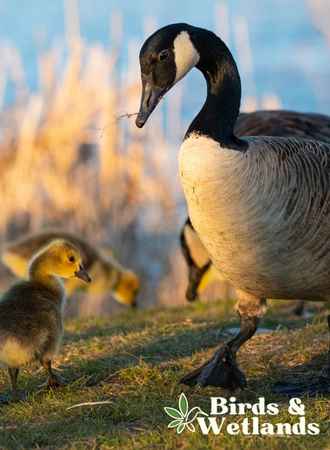
Do baby geese know their parents?
It’s a frequently asked question among bird watchers, and the answer might surprise you. Most birds, unlike mammals, do not recognize their family members after their first year. There are exceptions, particularly among social birds such as Canada geese. During the winter and on migration, Canada Geese reunite with their parents and siblings. It is thought that this behavior helps them survive in cold climates and avoid predators.
How long do goose eggs take to hatch?
Most goose eggs hatch in 30-35 days, though some lighter breeds may begin pipping after 28 days. Hatching can take up to three days on average. The actual incubation period varies slightly depending on the species of goose. Eggs from lighter breeds, for example, may begin pipping after 28 days, whereas eggs from larger breeds may take 35 days. Your baby waterfowl will be able to leave the nest and explore their new world once the eggs hatch.
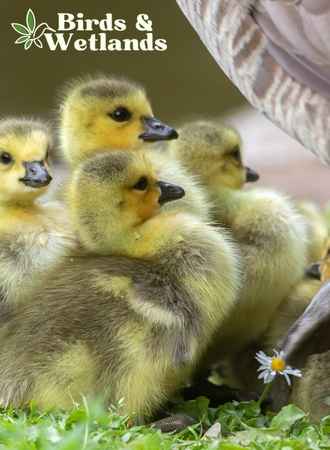
Do baby geese need a heat lamp?
Raising geese can be a rewarding experience if you know what you’re doing. Baby geese are delicate creatures that can thrive with proper care. A gosling’s first few weeks of life are critical. To survive, your baby birds must be kept warm. One or two 60 or 100-watt light bulbs or a special-purpose heat plate or lamp is the most convenient way to provide the necessary warmth for brooding baby chicks.
Inside the brooder, the brooder temperature should be between 90° and 95°F for the first week. If the brooder is uncomfortably cold, goslings tend to crowd in corners and huddle together with other goslings.
It is critical to monitor the temperature carefully and make adjustments to your heat lamps as needed. The goslings will become hypothermic and may die if the temperature falls too low. They will overheat and possibly die if the temperature rises too high.
Additionally, you need to make sure that the bedding in the brooder such as wood shavings doesn’t come in contact with the bulb because it could become a massive fire risk.
At what age can you let goslings swim in the water?
It’s best to wait a few weeks before allowing young goslings to swim in a small pond or swimming pool. This gives them time to improve their waterproofing and grow stronger.
When you do introduce them to the water, make it shallow and easy for them to get in and out. Otherwise, they may exhaust themselves trying to escape and be unable to return to shore.
After they’ve had a chance to swim, gently towel them off. Their feathers are still delicate at this stage, and you don’t want them to get cold. They’ll be able to swim more frequently once their pinfeathers grow in. Just keep an eye on them because young birds can get tired quickly.
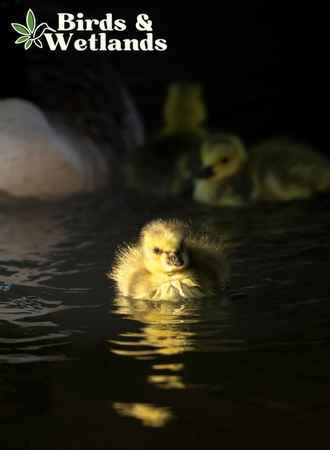
Do goslings need access to fresh grass and weeds?
For various reasons, goslings require access to fresh grass clippings and weeds. For starters, grass and weeds are natural food sources for goslings. They provide many of the nutrients needed by goslings to grow and thrive.
Grazing on fresh vegetation keeps goslings’ digestive systems healthy. Wet grass and weeds provide important roughage, which keeps goslings active and playful. They can feed themselves entirely on good early or fall pasture at five or six weeks of age. However, some supplemental feeding is recommended until the birds are fully feathered.
Goslings and geese will not eat sweet clover, lespedeza, or alfalfa. Allow about one acre of pasture for every 20 to 40 birds. Some duck keepers suggest ladino clover to make a fine pasture for baby geese.
As a result, giving goslings plenty of fresh greens and green feeds to eat daily is critical.
What do juvenile geese look like?
Goslings are born with a soft down that helps to keep them warm and dry. This down is gradually replaced by juvenile feathers, which emerge after around 20 days. The juvenile feathers are initially patchy and fluffy, but they eventually become more adult-like in appearance.
However, juveniles are not as brightly colored as adults, and they often lack the white patches or stripes found on some geese’s heads and necks.
After molting their juvenile feathers, geese undergo a pre-adult molt in which they grow their definitive adult plumage and flight feathers.
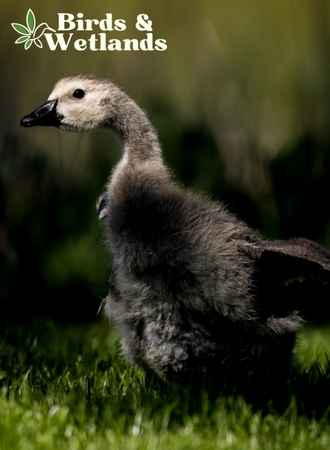
What do goose eggs look like?
Goose eggs are large and white. A Canada goose measures approximately 3.3 in (8.3 cm) by 2.2 in (5.6 cm) and weighs between 100 and 180 grams.
Goose eggs vary greatly in size and weight, with the smallest weighing roughly 60% of the largest. Smaller geese lay smaller eggs, which typically weigh around 100 grams. Goose eggs are large and heavy but far less so than swan eggs, which can weigh up to 350 grams.
A hard shell protects the developing embryo inside goose eggs. The shell has a smooth, glossy surface. A thin layer of membrane lies beneath the exterior, assisting the egg in retaining moisture and gas exchange.
Do goslings need waterfowl feed?
Goslings are baby geese that need proper care and attention, especially regarding their diet. While waterfowl starter feed can be hard to find, chicken feed is a common substitute that usually does the trick.
However, remember that goslings require a higher protein diet than chickens, so it’s important to mix the chicken feed with a protein source such as fish meal or ground-up insects. Adding some chick starter feed to the mix is also a good idea if you can find it, as it will provide the goslings with the nutrients they need to grow into healthy adults.
You may need to add supplemental niacin to your commercial feed in the form of Brewers yeast. Additionally, make sure to check that the feed only contains only those additives suitable for young ducks and geese. Your goslings should also have access to clean drinking water and a well-balanced diet.
Avoid feeding goslings bread because this food has no nutritional value and doesn’t support rapid growth.
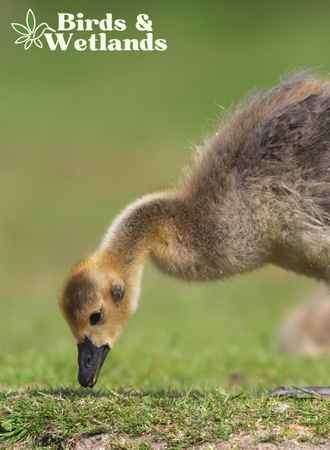
Can you raise ducklings and goslings together?
Ducks and geese are both waterfowl, so it stands to reason that they’d get along great. In fact, many people successfully raise ducklings and goslings together. Consider a few things if you decide to go this route.
To begin with, ducks and geese have different nutritional requirements, so you must feed them accordingly. Furthermore, because ducks are messier than geese, you may need to provide more clean water for drinking and bathing.
Ducklings and goslings develop at different rates, you may need to separate them as they grow. But if you’re up for the challenge, there’s no reason why you can’t raise ducklings and goslings together.
What are suitable bedding options for goslings?
When selecting bedding for young geese, choose a soft and comfortable material for them to sleep on. Simultaneously, the bedding in the brooder house must be absorbent enough to keep the area clean and dry. Pine shavings, hay, peat moss, straw and ground corn cobs are all good bedding options for goslings.
If you use straw or hay, change it frequently to prevent mold growth. Wood shavings are another option, but avoid using cedar shavings because they can harm birds. Peat moss is an excellent absorbent material that will help keep the area clean and dry, a natural option. Make sure to provide enough bedding for your geese to nest comfortably, whatever bedding you choose.
A wood, concrete, or dirt floor will suffice. During the brooding period, allow about 1-1/2 square feet of floor space per bird and cover the floor with about four inches of absorbent litter. Don’t let them brood on newspaper because the slippery surface gives them no grip and can lead to splayed legs.

When do goslings reach sexual maturity?
Depending on their gender, goslings reach sexual maturity at different ages. Males begin mating at three, while females begin breeding at four.
The age at which baby geese reach maturity varies according to environmental factors such as diet and health. For example, a well-nourished and disease-free gosling is more likely to reach sexual maturity sooner than one that is malnourished or sick.
Once geese begin to mate, they mate for life during mating and breeding season.
If you’re raising geese, you may need to start feeding them with calcium-rich feed, supplemented with the occasional crushed oyster shell as soon as they are ready to lay eggs. However, don’t introduce this diet too soon. Too much calcium in a goose’s diet is not recommended for non-laying juveniles.
Key Points
Baby geese need proper care, including a high-protein and niacin diet to prevent leg problems and malnutrition.
You can raise ducklings and baby geese together, but they have different nutritional requirements.
Juvenile geese may begin breeding at a young age, but it entirely depends on their gender and environmental factors.
Baby geese need a heat source to keep them warm because they are not yet completely feathered. However, keep in mind that high temperatures can hinder proper early feathering.
Baby geese need access to a good pasture and clean swimming water.

